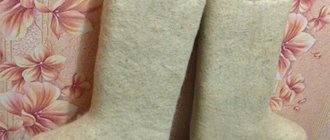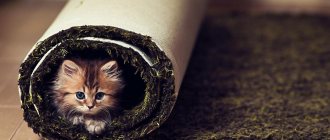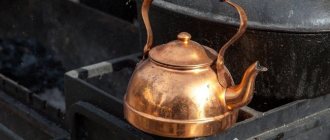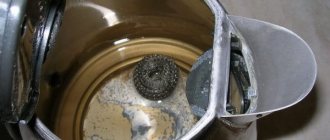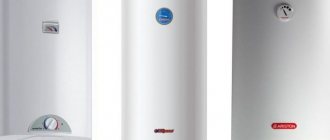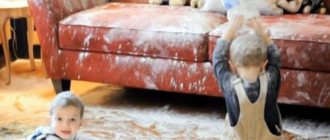With the advent of the digital format, there are fewer and fewer lovers of paper books, but for some, libraries from their favorite volumes still remain an important part of the interior. Books are very aesthetically pleasing, but over time they gather dust, a stale smell appears and other troubles appear. Let's figure out how to clean books from dust and prolong their life as much as possible.
We carry out dry cleaning
Dry cleaning of books from dust is carried out extremely carefully, as the pages may tear. There are three methods:
- Just shake the book. Some do it outside/balcony.
- Place the pages under a weak fan jet.
- Use a brush or dry cloth.
Most dirt from book pages and bindings can be removed without the use of water. How to clean a book from dirt, housewife tricks:
- Marks from pens and pencils can be erased with an eraser. All movements are carried out in one direction so that the pages do not tear.
- Waterproof glossy covers can be wiped with tea tree essential oil. The product will disinfect and eliminate unpleasant odors. In the same way, adhesive traces of price tags are removed from thick covers.
- Large build-ups of dirt are carefully cleaned off with fine sandpaper.
How to remove a grease stain from a book page:
- Sprinkle salt or talcum powder on the paper. The granules absorb fat well. After 15-20 minutes, brush off and repeat if necessary.
- Place blotting paper on the stain, heat the iron slightly and run the sole over the stain. The paper will absorb the fat when exposed to heat.
Clean at home in good daylight. For sticky and other unusual stains, use special library products.
Advice Miss Clean magazine recommends that you entrust the cleaning of old and antique items to professional services.
How can you tell if your laptop needs dust cleaning?
Understanding that your laptop needs cleaning is quite simple. You need to check the stability of the device. If the laptop often freezes, works slowly, and you have not installed any “heavy programs” on it, this is a common reason for the harmful effects of dust.
Another sign that a laptop is dusty is the heating of its surface during a short period of use. If the device is heavily soiled, it may heat up within a few minutes after starting operation.
As a result of overheating, the operating system and installed applications begin to slow down significantly, and resource-intensive programs can cause a “blue screen”. In some cases, the laptop may even shut down spontaneously because the processor temperature becomes too high.
Also, the need for “general cleaning” may be indicated by the appearance of the device and an increase in the noise level during its operation. That is, if there are clumps of dirt and dust sticking out of the ventilation holes, and there is also a lot of noise or hum from the fan, then immediate cleaning is required.
The book is damp: what to do
It will not be easy to return the pages to their original appearance in this situation. Place sheets of filter paper between the pages, or sprinkle with talcum powder. Close the book and build a press. Cornmeal will also help prevent mold. You can use a weak jet from a hair dryer or a vacuum cleaner with a narrow nozzle.
Important What you should not do is dry books on radiators, in direct sunlight, or with a hot iron.
Removing contaminants
It is better to remove fresh stains immediately
The following manipulations will help restore the original appearance of the tome:
- Erase pen marks, pencil marks or small stains with an eraser.
- Treat blood or insect marks with hydrogen peroxide.
- Remove blots from paint, cement and other heavy contaminants using fine-grained sandpaper.
Advice : preventive measures are always better than eliminating the consequences, so before reading, put a cover on the source of knowledge and do not eat while sitting at the book.
Eliminate odor
There is a simple but effective method to eliminate the smell of damp book pages:
- Take regular baking soda.
- Turn over the pages of the book.
- Cover and leave for several days.
- Shake out the baking soda with your hands/hairdryer/vacuum cleaner.
Soda is known for its ability to absorb unpleasant odors; it is often used to freshen rooms, for washing and cleaning various items, including books.
How to return a book to its “marketable” appearance and purity?
- If the notes are written in pencil, it is easy to remove them with a special eraser. The only nuance that you should pay attention to is that you need to use the eraser carefully, without exerting force, so as not to damage the sheets of paper. Writing with a ballpoint or ink pen is much more difficult to remove. Find a special ink eraser and use it.
- Ink blots are removed with hydrogen peroxide. Using a cotton pad soaked in peroxide, treat the ink stain, then blot thoroughly with a paper towel. Do not place books with wet pages on the shelf; they must first be thoroughly dried.
- Grease stains on book pages can be removed with tooth powder or chalk. This method is only suitable for fresh stains. Chalk powder is applied to the stain and ironed on top through a white sheet of paper or through a white paper napkin.
- Old grease stains can be removed with aviation gasoline or a mixture of gasoline and magnesium oxide (burnt magnesia).
- The rust that appears will become discolored after wiping the stain with a cotton pad soaked in citric acid.
- Wash any remaining finger stains with soapy water. A gentler method is to rub the finger stains with soap, then wipe off the soap with a soft, damp cloth.
- Remove surface mold stains that have formed on damp pages using a soft brush or a soft vacuum cleaner attachment. . Make sure that mold spores do not get back onto the paper. Then treat the stains with ammonia (apply it to a cotton pad and wipe the infected areas, covering a slightly larger area). The same procedure can be done using a three percent formaldehyde solution. Let the paper dry. If stains are still visible, wipe them with hydrogen peroxide.
When working with books affected by mold, use a protective mask. Mold entering the human body is harmful to health.
When removing stains, be careful not to damage the paper surface. If you notice that the top layers of paper are being removed along with the stain, stop this activity immediately.
Eliminating insects living in books
If while looking at books you notice insects or their metabolic products, urgently carry out work to destroy the uninvited guests. In this case, you can use several methods:
After any wet cleaning, book pages should be dried by inserting them between sheets of blotting paper.
- Place volumes of books in a plastic bag and place in the freezer for several days. By the way, this method was invented by an American entomologist and is successfully used in large libraries. There are even special installations for freezing paper media.
- Place the infested books in a plastic bag, add any anti-moth chemical and place them in a separate well-closed box for several days. Be sure to spray your shelving with an insect repellent spray. Before putting books on the shelf, ventilate them well.
- Remove stains left by insects on paper by wiping with a cotton pad soaked in food vinegar or a mixture of ammonia and glycerin in a ratio of one to four.
Some more important tips:
- Baking soda will help remove the unpleasant smell of mold or dampness. It must be filled between the pages and the book should be put aside for several days. Then remove the dry soda with a soft brush or vacuum cleaner.
- If a book falls under water, it must be dried in a well-ventilated area, slightly open (to do this, place plastic spacers between the pages).
Without waiting for the book to dry completely, place it under the press. To make a press, you can take any heavy objects that will not leave dents on the book. Then flip through the book. If wet sheets stick together, carefully separate them. To ensure complete drying and alignment, the sheets can be ironed with a warm iron; first, the sheet is protected on both sides with white paper. - In order for books to live with you for a long time and delight not only you, but also your children and grandchildren, they must be used correctly. When you pick up a book to read, wrap it in its cover. Don't eat while reading.
- Use bookmarks, do not fold the pages. If a page breaks, carefully straighten it and leave the book for a while under the influence of gravity. Do not leave the book unfolded, especially with the cover facing up. The book may fall apart and the pages may fall out.
- Take care of your books. If for some reason you no longer need them, do not throw them away, but take them to the nearest library.
Interesting and necessary books for you and, of course, cleanliness in the house!
Storage recommendations
The way books are kept largely determines their condition. The storage location should not be damp. Recommended temperature and air humidity parameters: 18-22° C and 50-60%.
Books should not be exposed to direct sunlight. Store them on closed shelves in an upright position. Do not place them too tightly and on top of each other - the pages should “breathe”.
Don't forget to wash the shelves where books are stored. Return everything to its place only after the cabinets have completely dried.
Cleaning is important not only for the safety of books. Some people are allergic to paper dust. Having picked up a copy, instead of the pleasure of reading, they get streams from their eyes and nose. Take care of the proper storage of books and the good health of the people in the house, and then the library will become your pride.
We recommend: Procedure for quick and high-quality cleaning of the room
Library care
A home library is the pride of many families. A kind of “soul” of the house. In order for the library to please you and your family for decades and bring benefits to the reader, books must be looked after and used carefully. Books are not only a source of knowledge, but also a source of dust. Caring for books includes: careful reading, storage and restoration. Choosing the right storage location for a library is the key not only to its longevity, but also to the health of the reader.
First of all, books need to be sorted into groups: by author, genres requiring restoration, volume sizes. This will make finding the book you need much easier. If a book is not needed or you do not plan to read it, do not rush to throw it away; it is better to give it to your local library. They are always happy to add to their book repertoire. A book you don't need will serve many more readers. Instances that require minor repairs can be dealt with later, when there is time.

